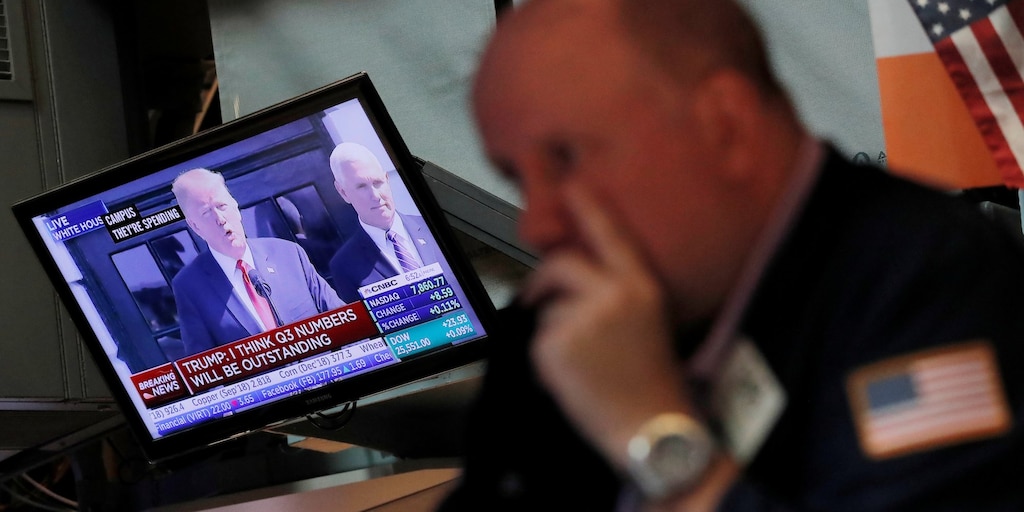 Reuters / Lucas Jackson
Reuters / Lucas Jackson
- According to Vanity Fair, prior to crucial points that have swung the trade war, investors traded thousands of electronically traded futures contracts on the S&P 500.
- In one case, Vanity Fair said, a trader or a group of traders, made $1.8 billion after buying 420,000 e-minis just before Trump announced talks “were back on track” with China.
- Those isolated trades have totaled to about $3.5 billion.
- “There is definite hanky-panky going on,” an unnamed “longtime” Chicago Mercantile Exchange trader told Vanity Fair.
- View Business Insider’s homepage for more stories.
The trade war has consistently sent markets moving in the past year. And according to a new Vanity Fair report, some traders may have been frontrunning new developments.
According to the magazine, some traders were suspiciously well-positioned ahead of huge swings in the trade war, either by buying or selling hundreds of thousands of electronically traded futures contracts, called “e-minis” on the S&P 500.
The magazine noted that on September 10, a trader or group of traders bought 82,000 e-minis in the last 10 minutes of trading in New York. In Beijing, it was almost 4 am on September 11 when this happened. A few hours later, the Chinese government announced it would lift tariffs on a range of American products. Markets surged, and the buyer who bought the e-minis made $190 million, Vanity Fair found.
The magazine quote an unnamed “longtime” Chicago Mercantile Exchange trader as saying: “There is definite hanky-panky going on, to the world’s financial markets’ detriment. This is abysmal.”
Meanwhile, a representative for the CME told Vanity Fair that the trades in question didn’t originate from a single source and are of no concern to the exchange.
Markets Insider has reported about the market impact of Trump’s tweets — Morgan Stanley and Goldman Sachs both analyzed trade-related tweets to see how much they moved markets, with the former creating the Volfefe index, a bot designed to analyze the movement of the stock market.
Goldman’s analysis showed that traders really do believe that the president’s tweets do affect Fed policy, which, in turn, affects markets.
Vanity Fair then notes that June 28, in the last 10 minutes of trading someone bought 420,000 e-minis, which came to about 40% of the day’s trade of e-minis — which already stood out.
Trump was in Osaka, meeting with China’s President Xi Jinping. He emerged an hour after saying that trade war talks were “back on track.” That week, the stock market surged, and whoever made that bet had a profit of $1.8 billion, Vanity Fair calculated.
On August 23, a Friday, markets were looking glum in the wake of poor trade war news. But the following week, Trump lied saying that trade war talks were going well after a phone call with China. The Chinese said no call happened. Nevertheless, the S&P bounced 80 points and a person who had bought 386,000 e-minis the week before made $1.5 billion, Vanity Fair found.













